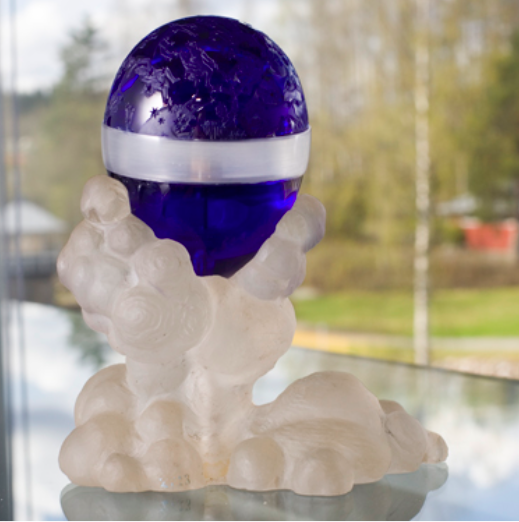1917 The Constellation Egg
Alexandra Feodorovna
The 1917 “Tsesarevich Constellation” Imperial Easter egg for the Empress Alexandra Fedorovna was never completed. In a letter from 1922 Faberge head workmaster Franz Birbaum described the piece to Eugene Faberge as “…an egg of blue glass, inlaid with the constellation of the day, on which the Heir apparent was born. The Egg was held up by cupids of silver and clouds of matte rock crustal. If I am not mistaken, inside was a clock with a rotating dial. Production of the Egg was interrupted by the War. The cupids and the clouds were ready, but neither the Egg itself with its inlay nor the pedestal was finished.”
In 1999, expert Tatiana Fabergé released images she had discovered of the original drawings for the two Imperial Eggs commissioned for delivery 1917. Until that time, no one believed that any eggs had been delivered in that year of the Revolution. Scholars believed, and many continue to believe, that neither of the 1917 eggs were ever completed. In his memoirs “Twice Seven” Birbaum states equivocally that:
The eggs for the Easter of 1917 were not finished; someone whom I do not know proposed that they should be finished and sold to him, but the firm did not accept the offer.
In 1925, the Egg’s last owner, Agafon Faberge, delivered several dozen Faberge pieces to the academician A.E. Fersman. Among these was an unfinished piece, comprising two halves of a dark-blue egg of cobalt glass and an unfinished base of rock crystal, made to resemble clouds. The clock dial and cupids, mentioned by Birbaum, were never found. The upper half of the Egg is semi-spherical in form, resembling a starry sky with animal constellations, engraved alongside the brightest stars of the night sky. A few of the star “cavities” are filled with rose-cut diamonds.
Due to the publication of these drawings, the pieces of carved hardstone and glass, previously unidentified, were recognized in the Fersman Mineralogical Institute in Moscow.
The unfinished elements from the Fersman Institute.
In the collection of the Fersman Mineralogical Museum, Moscow, RF

